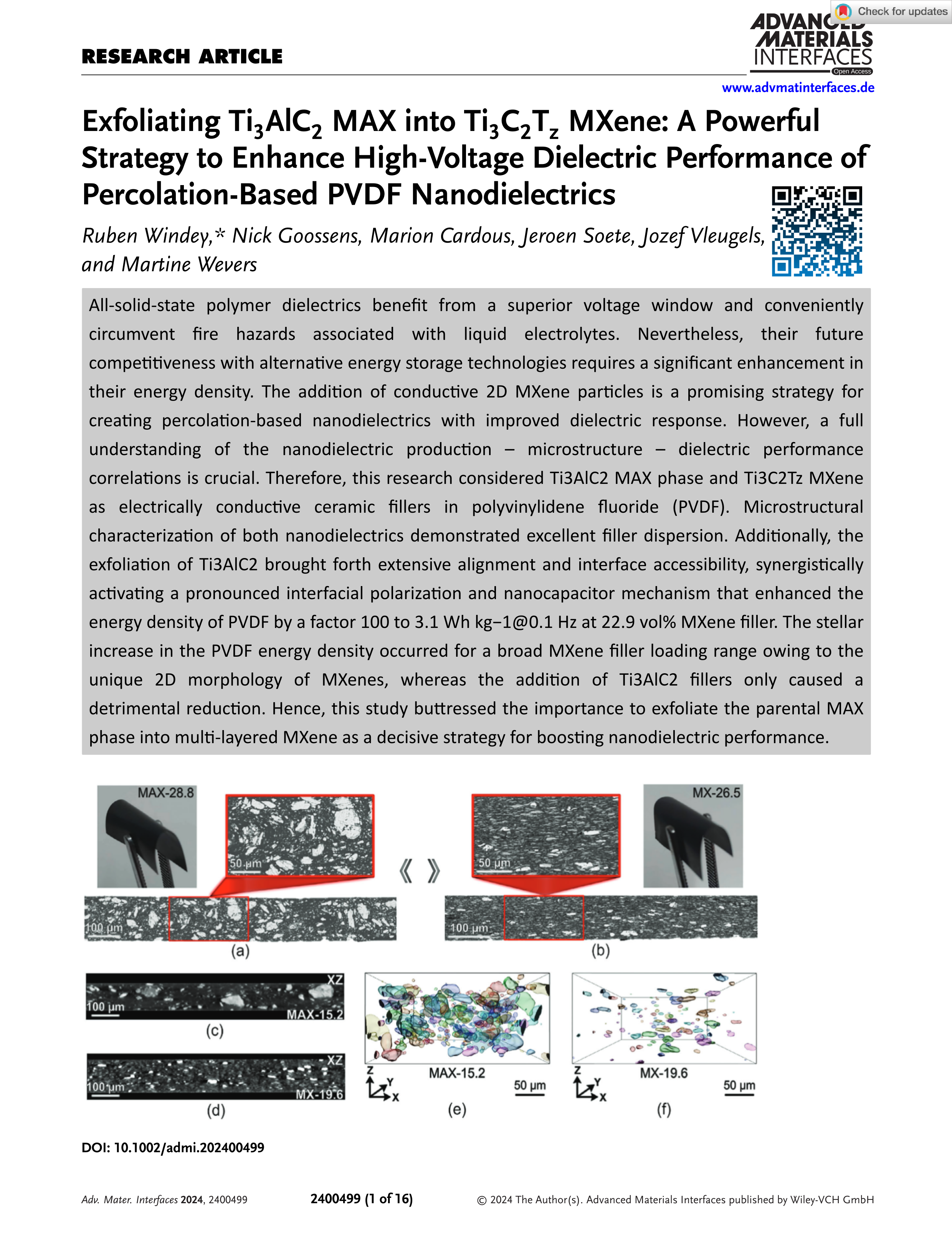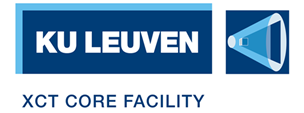 Abstract
Abstract
All-solid-state polymer dielectrics benefit from a superior voltage window and conveniently circumvent fire hazards associated with liquid electrolytes. Nevertheless, their future competitiveness with alternative energy storage technologies requires a significant enhancement in their energy density. The addition of conductive 2D MXene particles is a promising strategy for creating percolation-basednanodielectrics with improved dielectric response. However, a full understanding of the nanodielectric production – microstructure – dielectric performance correlations is crucial. Therefore, this research considered Ti3AlC2 MAX phase and Ti3C2Tz MXene as electrically conductive ceramic fillers in polyvinylidene fluoride (PVDF). Microstructural characterization of both nanodielectrics demonstrated excellent filler dispersion. Additionally, the exfoliation of Ti3AlC2 brought forth extensive alignment and interface accessibility, synergistically activating a pronounced interfacial polarization and nanocapacitor mechanism that enhanced the energy density of PVDF by a factor 100 to 3.1 Wh kg−1@0.1 Hz at 22.9 vol% MXene filler. The stellar increase in the PVDF energy density occurred for a broad MXene filler loading range owing to the unique 2D morphology of MXenes, whereas the addition of Ti3AlC2 fillers only caused a detrimental reduction. Hence, this study buttressed the importance to exfoliate the parental MAX phase into multi-layered MXene as a decisive strategy for boosting nanodielectric performance.
